How to make and use braided cord? Accessories/bracelet/strap experience
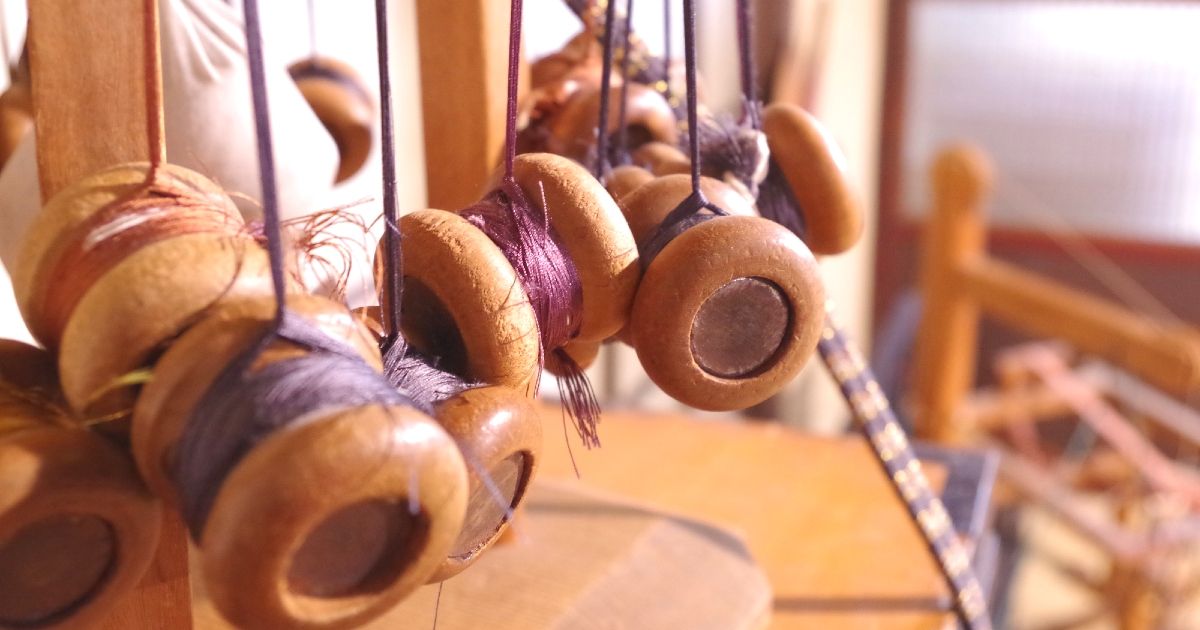
This time
Kumihimo
Special feature!
How to make braid
or,
use
Introducing about
To do.
together Experience plan for making accessories and daily necessities using braided cord Also picked up!
Let's check out the charms of braids, which have become a hot topic in popular anime movies, and how to enjoy them!
table of contents
What is braid?
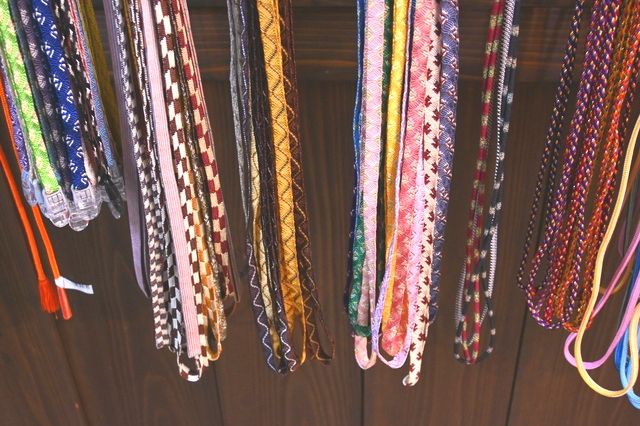
braid What is A string made by combining multiple threads and binding them together. is.
In the old days, braided cords were made by hand or using special equipment, but today there are also braided cords that are produced in automated factories.
The traditional method of making braids is said to have been introduced from the continent during the Nara period.
Later, from the early Kamakura period onwards, when braided cords with gorgeous designs reached their peak, as turmoil occurred throughout Japan, simple cords with excellent productivity and practicality came to be preferred.
Since the Muromachi period, braided cords have been incorporated into tea ceremonies, and have also been used in everyday items such as weapons and obijime, and to this day, braided cords made in various ways have been passed down as traditional crafts. .

In recent years, braids have appeared as a key item connecting the hero and heroine in blockbuster animated movies.
.
Its popularity has skyrocketed since the production method and tradition were beautifully depicted in the story!
Kumihimo is characterized by the use of threads of multiple colors to create intricate and vivid patterns.
.
The main types of braids are square cross-sections.
Kakugumi
”, a thin cross-section and wide ribbon-like “
Hiragumi
”, with a round cross section “
Marugumi
There are 3 types:
Recommended uses for each type are divided into square groups for obijime, flat groups for shoelaces, and round groups for bracelets. .
Another important point is that Japanese braid culture has developed independently in each region, so it has different characteristics depending on the region!
Below, we will explain some of the most famous braided cord production areas in Japan and their characteristics.
Iga braid
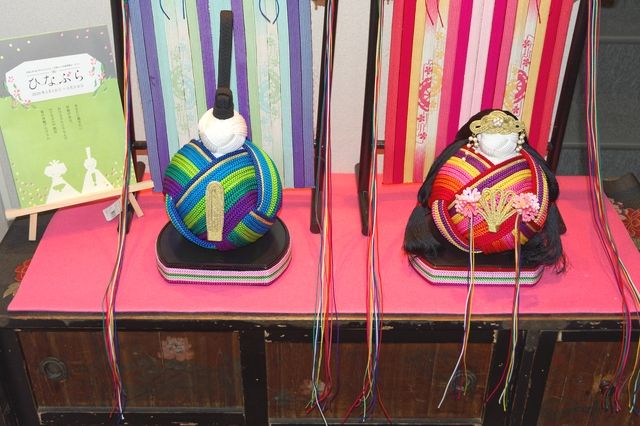
" Iga braid "teeth, Famous as a ninja village Triple ・ Iga area Kumihimo was born and passed down from generation to generation. is.
Iga braiding dates back to the Meiji era.
Described later
"
tokyo braid
”
It is said that Tokusaburo Hirosawa, who studied in Tokyo, opened a braiding factory in his hometown of Mie, and developed it as a side job for housewives in surrounding areas where there was no industry of its own.
.
The characteristics of Iga braid are:
Shiny and gorgeous finish
is
.
Braided cords are made using raw silk and silk thread, and each braided thread has a beautiful shine.
Coupled with the fact that the threads used have gold and silver colors, the finished braid gives a more gorgeous impression. .
tokyo braid
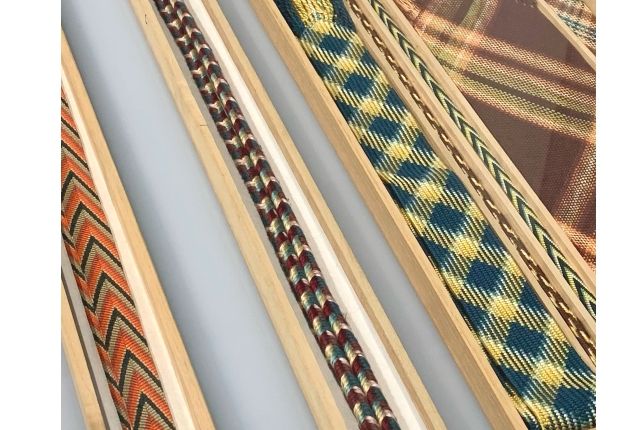
" Tokyo Kumihimo (Edo Kumihimo) "teeth, mainly Tokyo ·Taito, Suginami , Kita Ward Kumihimo produced near urban centers such as is.
It began in the early Edo period.
It is said that the establishment of the Shogunate in Edo led to an increase in demand for braided cords used in samurai weapons and costumes.
The characteristic of Tokyo Kumihimo is the thread.
Intersecting patterns and calm colors
is
.
It has a finish that evokes the traditional Japanese "wabi-sabi" style, and has a different charm from the gorgeous braided cord.
[Tokyo/Kagurazaka] Authentic Kumihimo Braiding Workshop in Kagurazaka.
Enjoy an authentic kumihimo workshop experience in the historical district of Kagurazaka.At DOMYO, you will be able to braid your own kumihimo cord, w
Kyoto braid
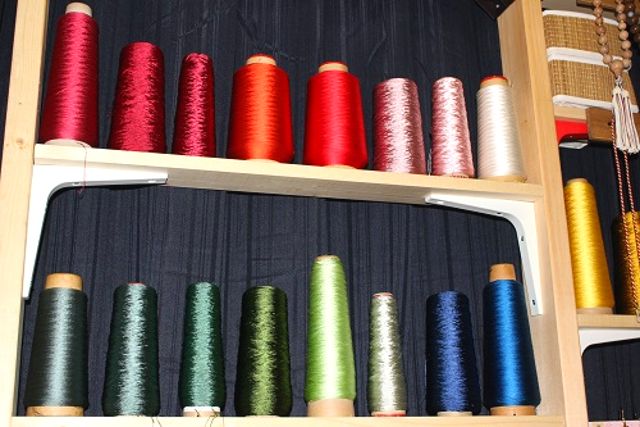
" Kyoto braid "teeth, Kumihimo produced in Kyoto City and Uji City located to the east of Kyoto City is.
The history of Kyo Kumihimo dates back to the Heian period, and since ancient times it has been developed and passed down as an ornament worn by aristocrats and members of the imperial family, as well as used in temples and shrines.
The main characteristics of Kyoto braid are:
complex pattern combination
is
.
Kyoto braids, which are delicately and precisely braided, have both high rigidity and design.
Combined with the luster typical of braided cord, it gives a more elegant impression.
[Kyoto, Nijo Castle North] Experience making a strap keychain using Kyo Kumihimo (braided cord)!
You will braid a kumihimo cord to make a keychain. You will experience braiding a kumihimo cord using a round table. You will braid a kumihimo cord just like in "Your Name". You can choose up to two colors of thread and braid four cords. You will then attach the kumihimo cord tied in a Kanai knot to a tassel to complete the keychain. Kanai knot is a type of knot that is said to make wishes come true.
[Kyoto/Nijo Johoku] W (double) braided cord and power stone bracelet making experience
This is the W (double) version of the braided cord and power stone bracelet. You can make two pieces: one using braided cord and power stones, and one using only braided cord. There are about 14 types of power stones included in the price, and you can choose 3 from about 20 types for an additional charge. You can choose from four types of metal fittings: hook type, new hook (charges apply), magnets (charges apply), and mantels (charges apply). The size is
How to make braid
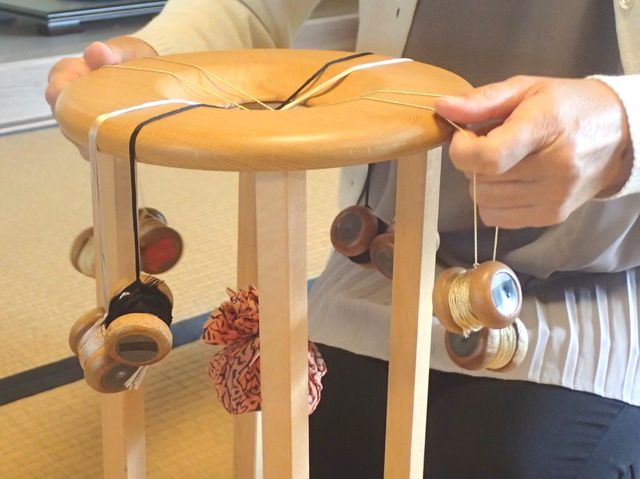
You can make braids at home by purchasing a kit that includes all the necessary tools. is.
However, if you are a beginner or are not confident, please refer to the explanation below.
Braid making experience
We recommend that you participate!
During your experience, you will be provided with special equipment and receive professional guidance.
It is relatively easy to make at home,
Braid using 4 threads
is
.
Below, I will briefly explain how to make four braids.
An important point is that when creating the four braids,
"
braided disc
”
will become necessary
.
A braid disc is a round board with a hole in the center and notches at equal intervals on the edge, making it a special item for making braids.
You can use discs to make braids by purchasing commercially available discs or by processing food trays. .
- Pass the four threads through the hole in the center of the disc, bundle one end, and tie into a knot to secure.
- Hook the four threads sticking out on the other side into the notches in a cross pattern.
- Move the right thread to the notch next to the left of the bottom thread
- Move the bottom thread to the notch to the left of the left thread
- Move the left thread to the notch to the left of the top thread
- Move the top thread to the notch where the four threads form a cross
- Pull the bundled threads on the back of the disc, adjust the shape, and repeat steps 3 to 6.
- It is good to tie the ends with decorations such as fringe or beads.
If you want to make it more colorful, We recommend a braid using 7 threads. is. You can create it using a similar method.
Below is How to make 7 braids is.
- After setting the 4 threads in a cross shape in step 2 above, set the other 3 threads in a "G" shape.
- It is good to match the color of the threads with similar colors facing each other.
- Move each thread in turn to the two notches to the left.
- After that, the procedure is the same as how to make four braids.
We recommend that you start by making it with 4 threads, which is a simple process, and then try making it with more colorful colors using 7 threads!
How to use braided cord?
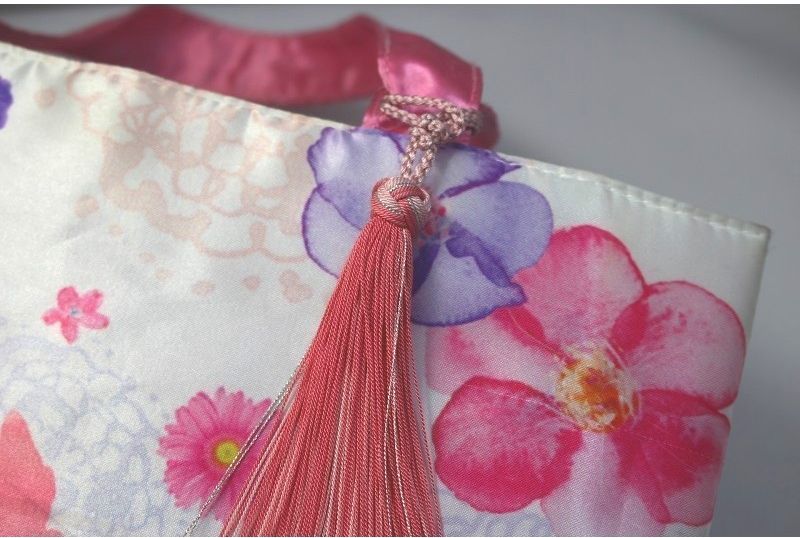
In the past, braided cords were used not only as decorations for Buddhist and military equipment, but also for daily necessities such as costumes and furniture.
After the Meiji Restoration, the main demand was for daily necessities. Nowadays, it is widely used as an accessory for Japanese-style obijime, necklaces, bracelets, and hair ornaments. .
The Japanese-style braided cord is perfect for matching with Japanese clothing such as yukatas and kimonos!
Not only can you incorporate it into your everyday fashion, but it is also recommended as a one-point item such as a key chain or strap to attach to your keys or bag!
Kumihimo Recommended accessory experience plan
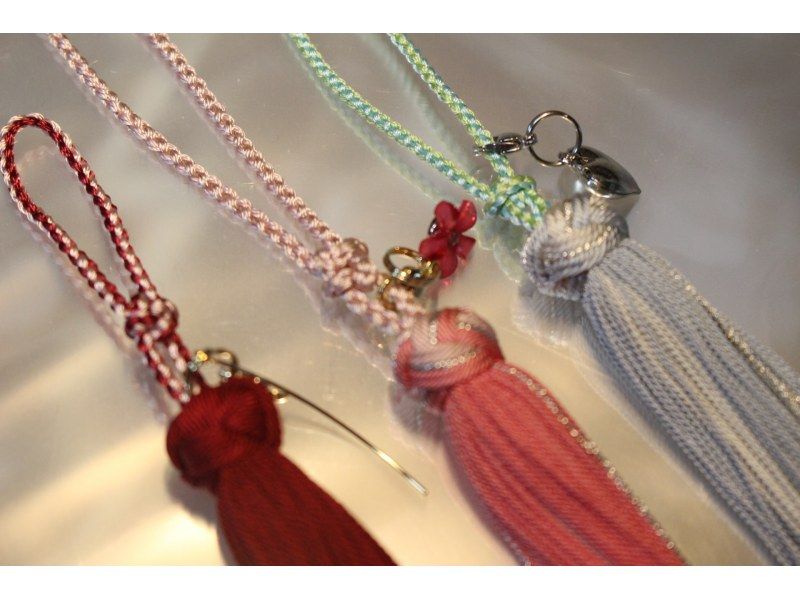
If you want to incorporate braided cord into your everyday fashion, we recommend accessories using braided cord. .
Braided accessories with a Japanese feel are perfect to match with yukatas and kimonos.
Please choose an experience where you can make your favorite accessories and make a reservation. .
[Kyoto, Nijo Castle North] Experience making a strap keychain using Kyo Kumihimo (braided cord)!
You will braid a kumihimo cord to make a keychain. You will experience braiding a kumihimo cord using a round table. You will braid a kumihimo cord just like in "Your Name". You can choose up to two colors of thread and braid four cords. You will then attach the kumihimo cord tied in a Kanai knot to a tassel to complete the keychain. Kanai knot is a type of knot that is said to make wishes come true.
[Braided earrings making experience with tea and sweets]
This plan is not available in English.
This is one of the few braiding classes in Fukuoka. You can experience braiding, which has been a hot topic in popular movies, in Akasaka, Fukuoka city. Using a cherry blossom round stand, you can choose from a wide variety of color combinations. The thread used is "silk," so you can make authentic braids. Your braided work will be sent to you by mail at a later date. Additional postage fees apply. (
Kumihimo recommended bracelet experience plan

If you want to always wear braids, we recommend the bracelet type!
You can enjoy an elegant design by combining it with decorative items such as power stones.
Check out the colors and power stones that can be used, book the experience you're interested in, and create your own original braided bracelet. .
This is an experience to make a one-of-a-kind bracelet (it can also be made into an anklet) that combines a braided cord bracelet and power stones. The braided cord is braided in a four-way braid on a round table, which appeared in the movie. You can choose three power stones from about 15 types. With additional fees (250 yen to 1000 yen each), you can choose about 50 types.
[Kyoto/Nijo Johoku] W (double) braided cord and power stone bracelet making experience
This is the W (double) version of the braided cord and power stone bracelet. You can make two pieces: one using braided cord and power stones, and one using only braided cord. There are about 14 types of power stones included in the price, and you can choose 3 from about 20 types for an additional charge. You can choose from four types of metal fittings: hook type, new hook (charges apply), magnets (charges apply), and mantels (charges apply). The size is
Kumihimo recommended strap experience plan

If you want to wear braids in everyday situations, we recommend the easy strap type. .
It's also perfect as an accent to complement various items you use in everyday life, such as bags, wallets, keys, and smartphones!
The atmosphere and shape of the finished product will vary depending on the experience you book, so find a plan that allows you to make a braided strap in the shape you like and make a reservation!
This plan is not available in English.
This is an experience plan for making a braided cord strap. The plan to make 1 bottle takes about 1 hour, and the plan to make 2 bottles takes about 1 hour and 30 minutes. Choose your favorite color from the silk thread wrapped around the ball and set it on the braid stand. If you follow the prescribed braiding method and make sure not to make any mistakes, the threads of the selected colors will combine to create a beautiful braid. Strap using that braid
This plan is not available in English.
You can try your hand at braiding at one of the few braiding classes in Fukuoka. Create your own original strap using the braided cord that became a hot topic in popular animated movies. Since the thread uses "silk", you can make authentic items. You can choose from a wide variety of combinations using the cherry blossom round stand, so you can create an original work that suits your taste.
Let's make a braid!
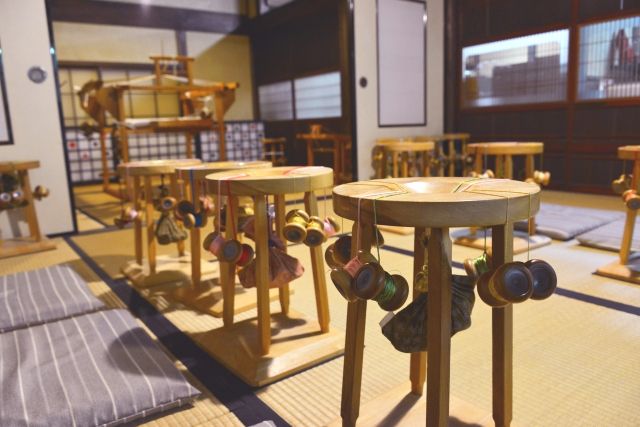
This time braid We have a special feature on!
Kumihimo has been rooted in Japanese culture over a long period of time. Even today, there are many ways to enjoy and use it. .
Please take a look at this special feature and try your hand at making your own braids!
*The content of this article is current as of September 2023.



![Images of popular manufacturing and handmade experiences in Kyoto [adult women, couples, children]](https://img.activityjapan.com/wi/kyoto-handcraft-acvitivy_thumb.jpg)

![Autumn outing! Images of recommended tourist spots and experiences in Kansai [2024]](https://img.activityjapan.com/wi/kansai-fall-sightseeing_thumb.jpg)

